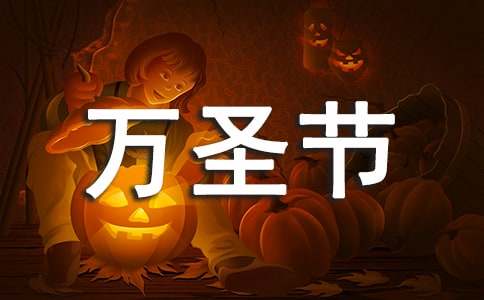萬圣節的資料英語
萬圣夜(Halloween)(又叫鬼節,萬圣節前夜)在每年的10月31日,是英語世界流行的節日,在這里,小編給大家準備了萬圣節的英語資料,一起來看看吧!

【萬圣節的來歷】
Halloween (or Hallowe'en) is an annual holiday observed on October 31, which commonly includes activities such as trick-or-treating, attending costume parties, carving jack-o'-lanterns, bonfires, apple bobbing, visiting haunted attractions, playing pranks, telling scary stories, and watching horror films.
Historian Nicholas Rogers, exploring the origins of Halloween, notes that while "some folklorists have detected its origins in the Roman feast of Pomona, the goddess of fruits and seeds, or in the festival of the dead called Parentalia, it is more typically linked to the Celtic festival of Samhain, whose original spelling was Samuin (pronounced sow-an or sow-in)".
The name is derived from Old Irish and means roughly "summer's end".Snap-Apple Night (1832) by Daniel Maclise.Depicts apple bobbing and divination games at a Halloween party in Blarney, Ireland.The name 'Halloween' and many of its present-day traditions derive from the Old English era.
The word Halloween is first attested in the 16th century and represents a Scottish variant of the fuller All-Hallows-Even ("evening"), that is, the night before All Hallows Day.[4] Although the phrase All Hallows is found in Old English (ealra hālgena m?ssed?g, mass-day of all saints), All-Hallows-Even is itself not attested until 1556.
【萬圣節的發展】
As European immigrants came to America, they brought their varied Halloween customs with them. Because of the rigid Protestant belief systems that characterized early New England, celebration of Halloween in colonial times was extremely limited there.
It was much more common in Maryland and the southern colonies. As the beliefs and customs of different European ethnic groups, as well as the American Indians, meshed, a distinctly American version of Halloween began to emerge.
The first celebrations included "play parties," public events held to celebrate the harvest, where neighbors would share stories of the dead, tell each other's fortunes, dance, and sing. Colonial Halloween festivities also featured the telling of ghost stories and mischief-making of all kinds. By the middle of the nineteenth century, annual autumn festivities were common, but Halloween was not yet celebrated everywhere in the country.
In the second half of the nineteenth century, America was flooded with new immigrants. These new immigrants, especially the millions of Irish fleeing Ireland's potato famine of 1846, helped to popularize the celebration of Halloween nationally. Taking from Irish and English traditions, Americans began to dress up in costumes and go house to house asking for food or money, a practice that eventually became today's "trick-or-treat" tradition. Young women believed that, on Halloween, they could divine the name or appearance of their future husband by doing tricks with yarn, apple parings, or mirrors.
In the late 1800s, there was a move in America to mold Halloween into a holiday more about community and neighborly get-togethers, than about ghosts, pranks, and witchcraft.
At the turn of the century, Halloween parties for both children and adults became the most common way to celebrate the day. Parties focused on games, foods of the season, and festive costumes.
Parents were encouraged by newspapers and community leaders to take anything "frightening" or "grotesque" out of Halloween celebrations. Because of their efforts, Halloween lost most of its superstitious and religious overtones by the beginning of the twentieth century.
By the 1920s and 1930s, Halloween had become a secular, but community-centered holiday, with parades and town-wide parties as the featured entertainment. Despite the best efforts of many schools and communities, vandalism began to plague Halloween celebrations in many communities during this time.
By the 1950s, town leaders had successfully limited vandalism and Halloween had evolved into a holiday directed mainly at the young. Due to the high numbers of young children during the fifties baby boom, parties moved from town civic centers into the classroom or home, where they could be more easily accommodated.
Between 1920 and 1950, the centuries-old practice of trick-or-treating was also revived. Trick-or-treating was a relatively inexpensive way for an entire community to share the Halloween celebration.
In theory, families could also prevent tricks being played on them by providing the neighborhood children with small treats. A new American tradition was born, and it has continued to grow. Today, Americans spend an estimated $6.9 billion annually on Halloween, making it the country's second largest commercial holiday.
【萬圣節的資料英語】相關文章:
萬圣節的英語資料09-21
關于萬圣節的英語資料11-03
萬圣節手抄報英語資料09-03
萬圣節賀卡資料英文09-12
小升初英語資料07-23
萬圣節中英文資料07-28
萬圣節的資料中英文09-21
萬圣節簡介英語05-24
萬圣節英語介紹08-20
萬圣節英語簡介08-14